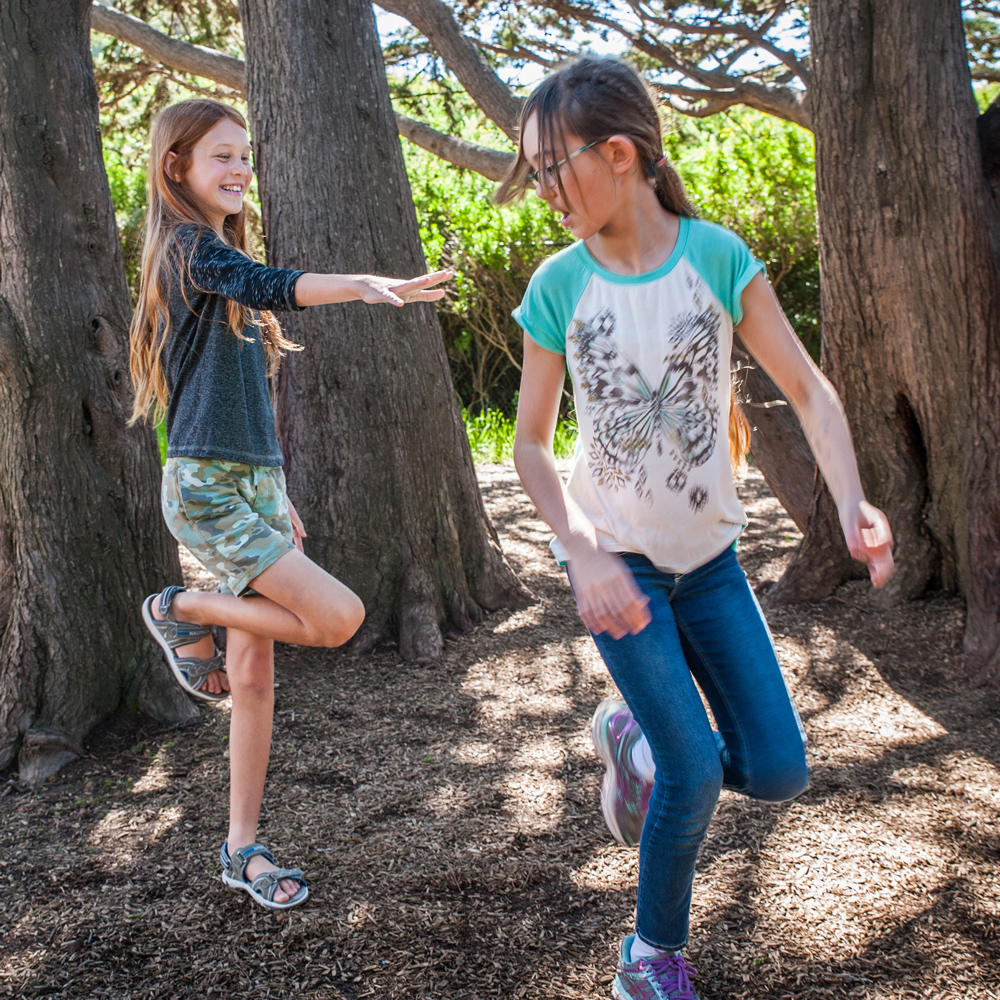Everyone loves a game of tag! Develop new rules for this classic game and continually increase the challenge by changing the rules. This activity helps children practice creative thinking skills.
Materials Required
- A variety of sports equipment (optional)
- A flat, open space outside that is large enough for the group to run around
Instructions
- Form a large group of about 5 or more.
- Choose one individual to be “it,” and play a few rounds of classic tag.
- After playing tag for a few minutes, sit in a circle and brainstorm as many ideas as possible to make the game more interesting. Perhaps two people are “it” or maybe individuals that are tagged must link arms with the person who is “it” and continue trying to tag others. Try to think of as many new rules as possible.
- Remember, there are no “right” or “wrong” ideas. Consider taking advantage of your environment (i.e., hiding behind trees) or introducing some equipment into the game.
- After agreeing on the new rules, bring the game to life! Play the new version of tag.
- Work together to come up with some fun ideas to name this version of tag (e.g., Wiggle Tag, Treehugger Tag). Make a group decision to choose the overall favorite name and then write it down with the rules of play.
Additional Tips
Try these add-on activities:
- Create a new set of rules and keep playing!
- Change the environment of the game. Is the group outside? Try finding a safe, indoor location. Move from an open field to a wooded area so that players can hide. If it is warm outside, maybe the game could even involve water!
- Split into two groups and create two or three rules for a new game of tag. After agreeing on these rules, form one large group and attempt to combine both sets of rules into a truly challenging game.
- Try adding a creative twist to another classic game. Create a new and improved version of capture the flag or hide-and-seek.


